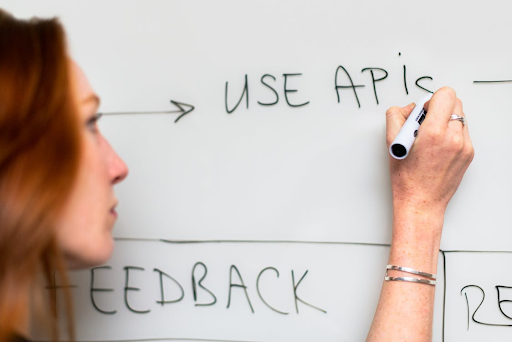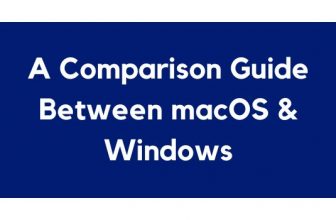
Time is one priceless resource that every organization cannot get enough of. Luckily, there are technologies that can help you save time, especially in the banking sector. We are talking about RPA and API. These technologies keep automation and processes working smoothly 24/7.
Nevertheless, RPA and API are different in certain aspects. Therefore, you need to make sure that the one you are settling on is good for your business. Well, that is where this post comes into play. It defines API automation, looks at RPA vs API, as well as when to apply these technologies.
What is API Automation?
To help you better understand what API automation is as well as the best API integration platform used, we have to look into some background of API, which, in full, is an application programming interface. API is a set of functions that are shared. This set explains how two different services or software applications can exchange information and communicate with each other. What’s even better, the individuals creating these systems do not need to know each other.
From this information, we can define API automation as the application of automation for API testing, deployment, and building. Business owners rely on the automation of the application programming interface (API) to make their businesses more productive, cost-efficient, and flexible. This, in turn, allows business owners to free up employees; making them focus on more crucial activities. Ideally, most business owners prefer to use the REST API, which, in full, is “REpresentational State Transfer”. This is the most applied type of API because it is a lightweight, flexible architecture compatible with many different types of data formats.
Up to this point, we already know what API is. This particular type of interface gives applications the freedom to interact with each other. Robotic Process Automation (RPA), on the other hand, heavily relies on software bots, or just bots, to complete tasks. They complete these tasks through the user interface of each of the applications of your business. In simpler terms, RPA commands software bots to complete tasks that your employees would otherwise do. Best of all, these bots perform these tasks exactly as your employees would do them. Well, this explains why the disadvantages of robotic process automation are not so many.
RPA vs API: Similarities and Differences
Now that you know what RPA and API refer to, it is easier to identify their similarities. That being said, both of these technologies can lead to the following:
• More savings and greater profits in the long run
• Reduced error as a result of human activity
• Faster and more efficient sharing of data
• Improved data accuracy
• Simpler and smoother business processes
• Quicker clerical tasking
• Increased turnaround and reduced workforce strain
The integration of RPA vs automation of API is, however, a pretty complex topic. With that said, we will deduce these differences from accessibility, cost, speed, and ROI.
1. Accessibility
In API, only developers know how to utilize it. But, in the RPA solution, you can build it by utilizing a low-code graphical interface as well as a daily understanding of the user processes of your business. It is, therefore, safe to say that RPA is more accessible than API.
2. Cost
API integrations take months or even years to implement. Furthermore, you will need to hire highly-paid workers to implement this technology and use it in your business. On the contrary, an RPA integration can be set up within weeks, which means the cost of implementing it is normally much lower than the cost of implementing API.
3. Speed
Speed is where API gets one over RPA. Needless to say, API integrations often work faster than the bots of RPA. That is when API and RPA bots are performing the same tasks. You should, however, note that RPA bots can work many times faster compared to humans. They also work with no errors and without taking breaks.
4. ROI (Return on Investment)
Although API can offer you a greater ROI, calculations tend to be confusing, not to mention the fact that they are invisible. Calculating ROI under RPA is simple and clear. All you need to do is measure the time saved with the tasks automated to get an answer.
When to Use API and RPA Solutions
There are lots of instances where you may need to use API and RPA solutions. You may need to apply API solutions under these instances:
• Looking to improve accuracy: API automation can be run more often and with more accuracy compared to manual testing.
• Looking to reduce human error: API automation is highly unlikely to lead to errors, especially when compared to manual tests that are run by DevOps.
• Looking to reduce cost: Running an API automation test is less costly than running a manual test.
• Looking to increase coverage: Compared to manual tests, API automation tests can cover a wider area of functionality.
RPA automation, on the other hand, comes in handy under the following circumstances:
• Financial services: Robotic process automation in financial services can be applied to automate account openings & closings, process insurance claims, and manage audit requests. It can also be used in foreign exchange payments.
• Customer service: Robotic process automation can also come in handy for making customer service better. You can utilize end-to-end RPA automation to automate contact center tasks, such as uploading scanned documents, verifying info for auto rejections or approvals, and verifying e-signatures.
Besides, you need RPA for when you want to:
• Speed up processing time dramatically
• Digitize and audit process data to improve efficiency
• Reduce manual and repetitive tasks to minimize costs
• Enable employees to become more productive
Conclusion
It is worth noting that while some organizations need just one of this technology, others may have to implement both of them to function perfectly. Knowing how they work is, therefore, extremely important. With that said, we hope you found this article useful.





